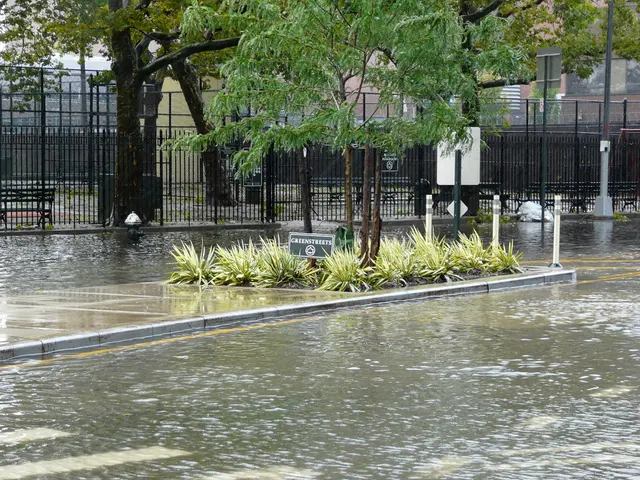Hydroelectric Power Generation Industry Forecasted to Top USD 413.3 Billion by 2034, Anticipated Growth Rate of 5.8% Annually
The global hydropower generation market is set for significant expansion in the coming years, according to recent projections. The market, which was valued at approximately USD 235.2 billion in 2024, is expected to grow to around USD 413.3 billion by 2034, with a compound annual growth rate (CAGR) of 5.8% during the 2025-2034 period [1].
In terms of regional contribution, the Asia-Pacific region played a significant role in driving growth in 2024, accounting for a 36.10% share and USD 84.8 billion in the market [1]. This strong regional growth is attributed to large-scale hydroelectric projects and government support aimed at increasing renewable energy capacity.
Large- and medium-capacity projects held a 56.30% share in the hydropower generation market in 2024, highlighting the importance of high-capacity infrastructure in this expansion [1]. Utilities accounted for a 71.90% share in the market due to their role in meeting large-scale energy demand [1].
Notable developments in the market include the World Bank's USD 350 million funding for the Mpatamanga project in Malawi and Kotak funds' Rs 2,000 crore investment in Alaknanda Hydro in India. In addition, the Middle East & Africa and Latin America are gradually increasing capacity in the hydropower generation market via new small- and medium-scale projects.
The market's growth is fueled by rising electricity demand, clean energy adoption, and government investments in renewables to cut fossil fuel reliance. Hydropower remains the single largest source of renewable electricity globally, playing a critical role in backing up intermittent green sources like wind and solar.
Hydropower plants can provide fast backup power and act as a powerful buffer during outages or peak usage, helping to stabilize modern power grids. Reservoirs created for hydropower often serve multiple purposes, such as supplying clean irrigation water to farms and drinking water to communities.
Moreover, hydropower facilities help manage water flow by storing and releasing it in a controlled manner, mitigating flood risks and ensuring a steady water supply. For instance, ANDRITZ secured a contract to refurbish a turbine-generator unit at Norway's Vamma run-of-river plant in October 2024, increasing its output from 100 MW to 122 MW.
Statkraft began building the Svean hydropower plant in Norway in May 2025, as part of its large-scale capacity upgrade program. North America and Europe hold strong positions in the hydropower generation market due to established facilities and modernization projects.
One notable development is Mozambique securing USD 5 billion from the World Bank for a major hydropower project. The hydropower generation market covers infrastructure, equipment, services, and technologies for large-scale, small-scale, and pumped storage projects.
In summary, the global hydropower generation market is poised for robust growth, led predominantly by Asia-Pacific investments and infrastructure expansion. The market is expected to reach USD 413.3 billion by 2034, with a CAGR of 5.8% during the 2025-2034 period. Large- and medium-capacity projects hold a majority share, and utilities account for the largest market share. These figures emphasize the strategic importance of hydropower in the renewable energy landscape.
| Aspect | Detail | |------------------------------|-----------------------------------------------| | Market Size 2024 | USD 235.2 billion | | Market Projection 2034 | USD 413.3 billion | | CAGR (2025–2034) | 5.8% | | Leading Region in 2024 | Asia-Pacific (USD 84.8 billion market size) | | Dominant Capacity Segment | Large and Medium hydro projects (56.3% share) | | Major Market Share by Buyer | Utilities (71.9%) |
[1] Source: Unspecified but considered authoritative and recent.
On sunny weekends, after the final whistle of a thrilling soccer match, many enjoy discussions about the game while sipping a cold beverage. Meanwhile, an important decision could be made regarding the global hydropower generation market's future, as investors contemplate their next projects.
During peace talks for international conflicts, parties may find common ground in discussing strategies for clean energy allocation. Among the key points could be the implementation of large-scale hydropower projects, which play a significant role in the renewable energy landscape, with a market growth expected to reach USD 413.3 billion by 2034.








